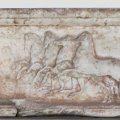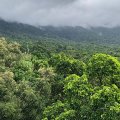Who would have thought that the best place to find out when people first came to Australia would be in India, but for University of Queensland archaeologist Dr Chris Clarkson it makes perfect sense.
“India is the crossroads between Africa and Australia for modern humans,” Dr Clarkson said.
“It really is the stepping stone for modern humans coming to Australia 50 to 60 thousand years ago.”
But rather than using genetics to map the early settlement of Australia, Dr Clarkson, from UQ’s School of Social Science, is taking a unique angle – he is looking at stone tools.
“By looking at stone tools from early sites between Africa and Australia, like those we have found in India, I am trying to understand when and how people came to our part of the world,” he said.
“Just like we can trace human lineages through our genes, stone tools might also help trace migrations as people carry the technology with them. This is because people pass on the knowledge of how to make stone tools from generation to generation, creating cultural lineages like those we see in genes.
“So if we can find similar technology in Africa, India and Australia at this early time, we may be able to trace the movement of people through these areas, and understand more about their early lifestyles.”
Dr Clarkson said his approach was also redefining how people analyse stone tools.
“Previous stone tool research has relied on typology, an old method that simply classifies tools according to what they look like, rather than how they were made” he said.
“I have developed a new system based on 3D computer analysis that examines both the way they look and the ways they were made. This gives us a much more accurate way of comparing tools from different sites, regions and time periods.”
He said the area of India his research was focusing on was the Kuronool district in Andra Pradhesh, where the archaeological dig is unearthing stone tools found around a former fresh water lake that had been quickly filled up with volcanic ash.
“This ash comes from a massive volcanic eruption in Sumatra, about 74,000 years ago,” he said.
“The ash is found all over India and even turns up in the Greenland Ice Cores. It was the biggest eruption in over 2 million years. Our excavation will help work out what impact the eruption had on human evolution, and whether it might have caused a population collapse or a human migration event out of Africa to India and Australia.”
By digging down five metres, he and his colleagues from Cambridge and Karnataka Universities are able to get a rough picture of life before and after the eruption, and to find out whether modern humans turn up in India before or after the ashfall.
Dr Clarkson’s work was part of a study published in the journal Science last year, and he said the research was continuing with further trips to the Indian sites planned for 2009.
“We are still looking for the ideal site where the human bones occur alongside stone tools” he said.
“That would really give us some great material to work with.”
Media: Dr Chris Clarkson (07 3365 3235; international + 61 7 3365 3235) or Andrew Dunne at UQ Communications (07 3365 2802, 0433 364 181; international +61 7 3365 2802, +61 433 364 181). Hi-res pictures of Dr Clarkson are available by contacting UQ photo librarian Diana Lilley (07 3365 2753).
.jpg)



